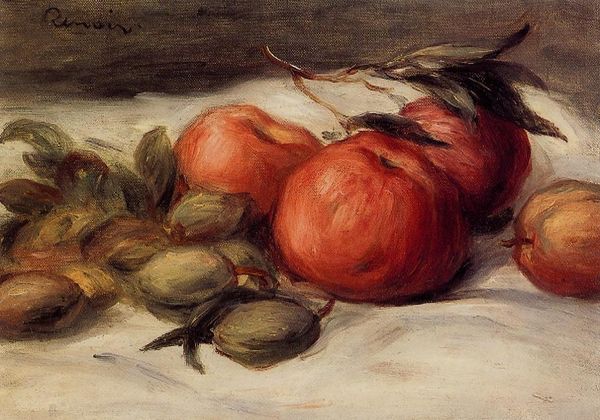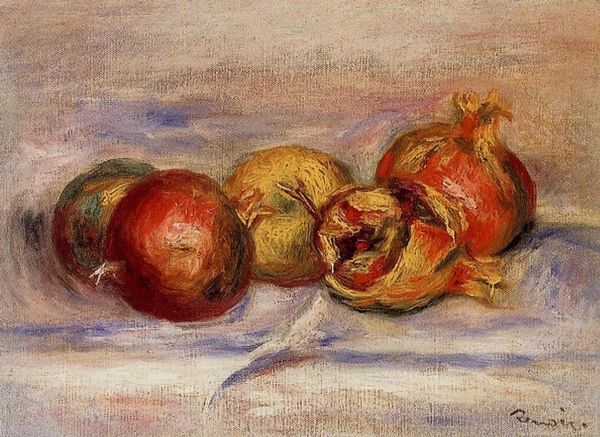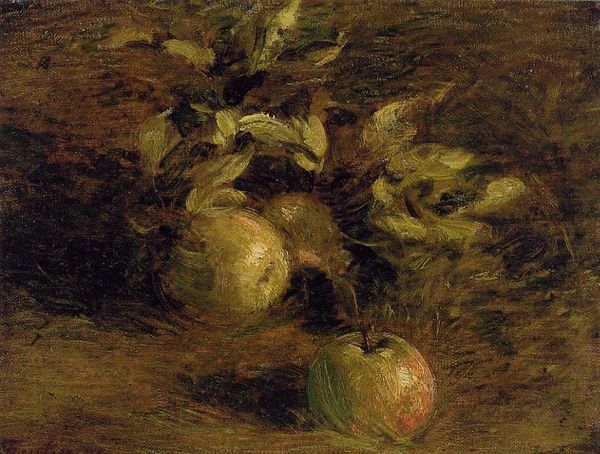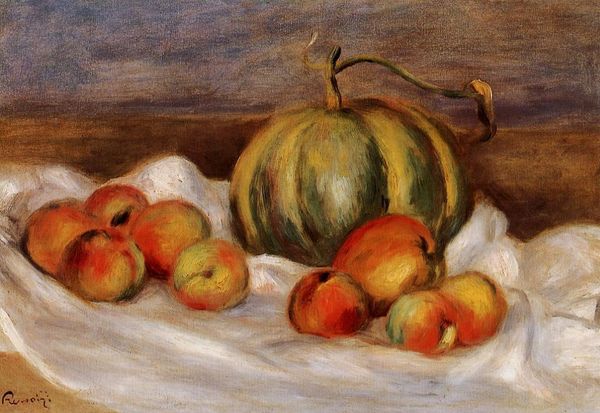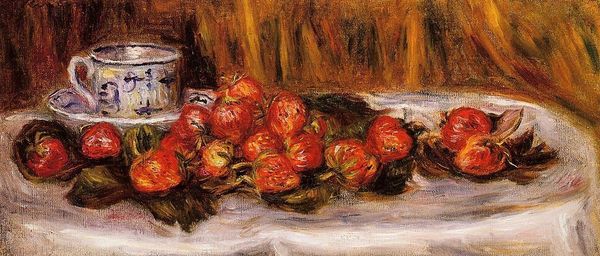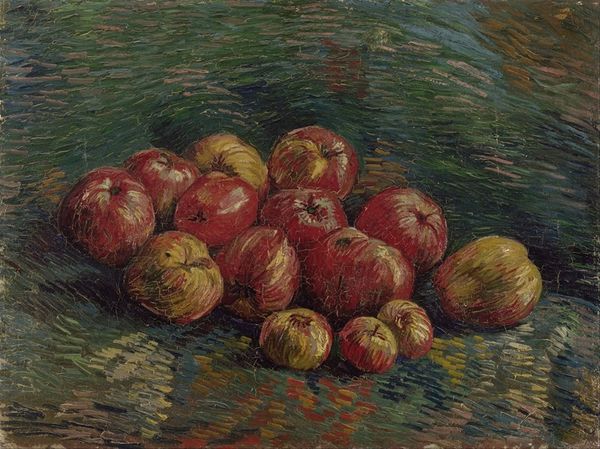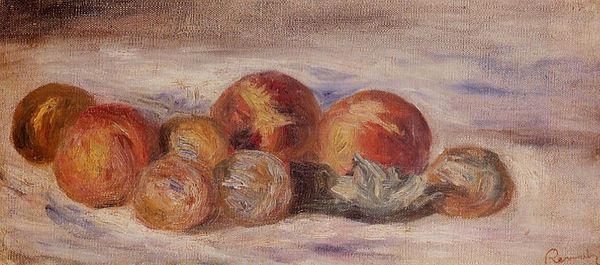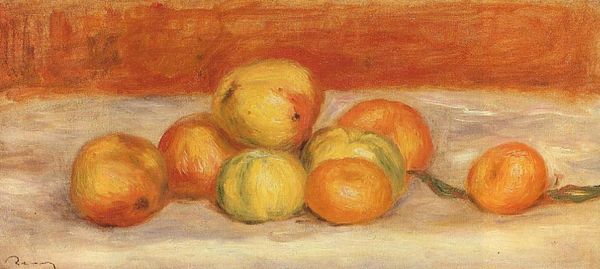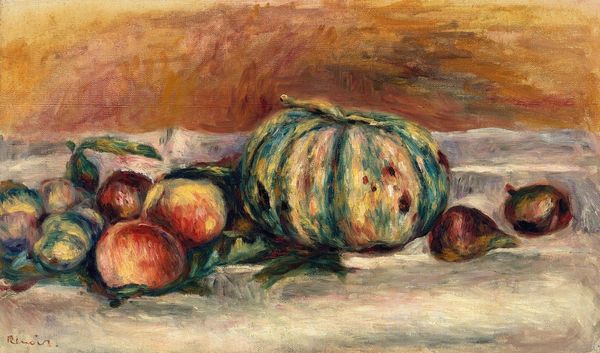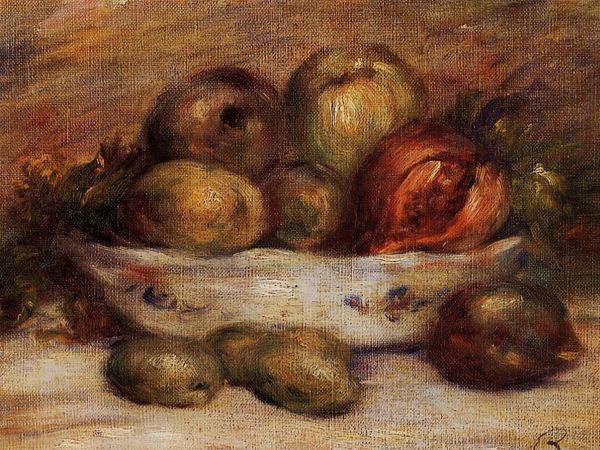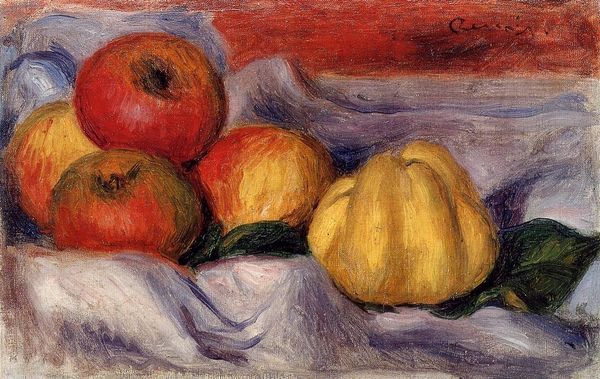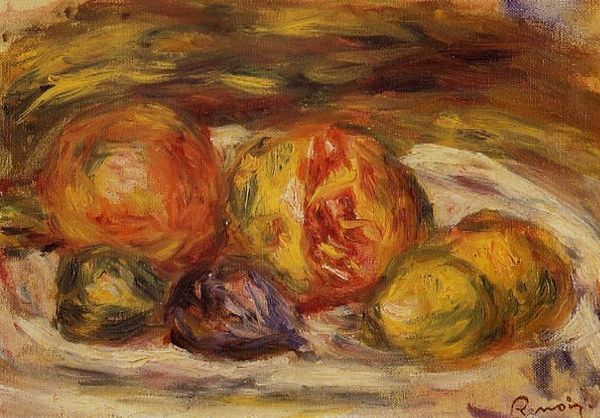
painting, plein-air, oil-paint, photography
#
still-life
#
food
#
painting
#
impressionism
#
plein-air
#
oil-paint
#
impressionist landscape
#
photography
#
oil painting
Dimensions: 60.6 x 39.1 cm
Copyright: Public domain
Editor: So, here we have Renoir's "Onions" from 1881, an oil painting depicting... well, onions. There's a casualness to it; not your typical grand still life. What's your take? Curator: What I see is Renoir engaging with the everyday. Think about it: he’s elevating onions—a common, affordable food—to the realm of high art. He's making a statement about what deserves artistic attention. Editor: An artistic statement through onions? Interesting! I’d never considered that angle. Curator: Consider the means of production too. Were these onions from a local market, reflecting Parisian commerce? What does the choice of subject matter tell us about Renoir’s engagement with the societal role of painting? How does it participate in the impressionist movement? Editor: So, not just *what* is painted, but *why* and how that “what” relates to broader systems of labor and value... Curator: Exactly. And look at the loose brushstrokes, the almost casual application of paint. Is this about depicting the onions faithfully, or is it about the *process* of painting, the act of applying oil to canvas? Editor: I suppose it does both. By emphasizing the handmade quality, it seems he's subtly rejecting mass production, honoring a slower, more deliberate mode of creation. Curator: Precisely! So what appears as just “onions” becomes an investigation into the materiality of art and its relationship to daily life. Now, do you see those small touches of blue in the linen the onions lay upon? What significance might it possess in conveying class status within 19th century French society? Editor: Definitely gives me a lot to chew on! Curator: Me too.
Comments
No comments
Be the first to comment and join the conversation on the ultimate creative platform.
